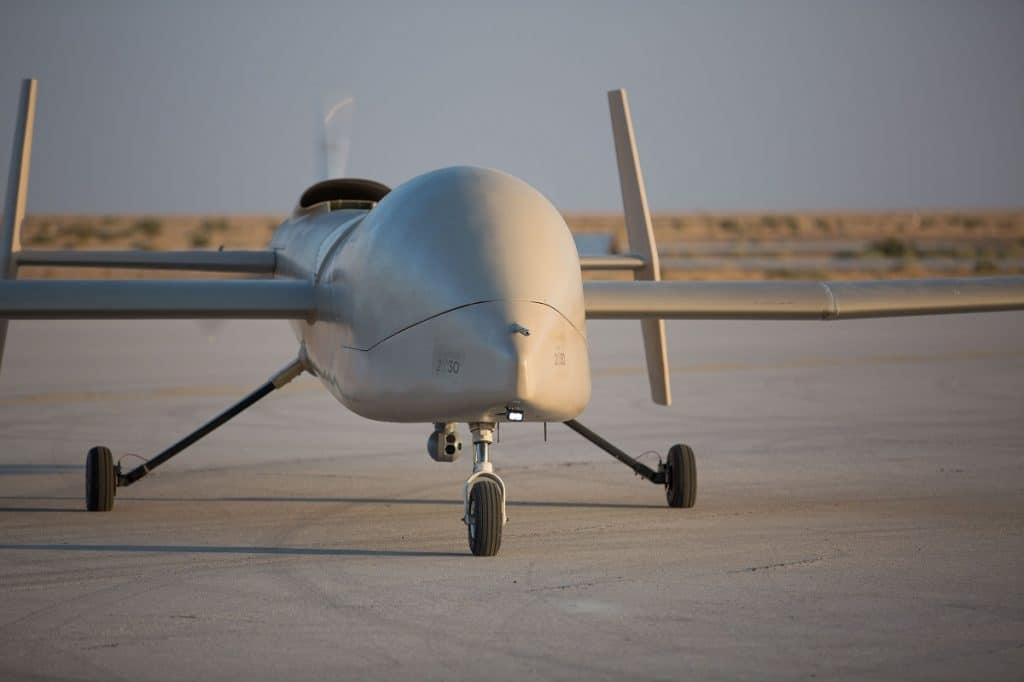UAVOS, KACST developing Flight Control System for multi-mission, multi-domain UAS
March 4, 2020 | AUVSI News

UAVOS and King Abdulaziz City for Science and Technology (KACST) in Saudi Arabia are collaborating on the scientific research and development of the Flight Control System (FCS), which is designed to fit and leverage multi-mission, multi-domain UAS platforms.
As a result of their shared experience and first-class knowledge, UAVOS and KACST have created a Saker-1B Medium Altitude Long Endurance (MALE) UAS. More than 500 hours of day and night test missions under various weather conditions have confirmed the drone’s specifications. In total, 1,000 hours of take-off and landing test missions have been successfully performed, with the long endurance flights lasting up to 19 hours.
UAVOS notes that the UAS is equipped with a satellite communication data link for Beyond Line of Sight (BLOS) operation.
“Our ultimate goal of the scientific research and development partnership is to make UAV technologies, which can turn vision into the UAV of tomorrow,” says UAVOS CEO and Lead Developer Aliaksei Stratsilatau.
“For 10 years in partnering with KACST, we hold to a singular and enduring mission: to make breakthrough technologies for the unmanned system industry.”
As noted by Stratsilatau, UAVOS and KACST have collaborated on the development of Flight Control System capability for UAS for 10 years. The R&D partners have finished performing the flight tests of their UAS in Saudi Arabia to verify easy and fully autonomous online and offline operation of the UAS from takeoff to landing. These test missions were conducted after several other successful operational exercises that were performed in recent months.
UAVOS says that the Saker-1B MALE UAS has proven capable of operating in harsh desert with long endurance, high altitude and high speed flights. High performance of satellite data link for command and control was demonstrated. The UAS also got sustainability to jamming attacks and advanced data security, thanks to the current UAVOS autopilot technology being available.
The Saker-1B performed several heavy weight landing tests with the maximum weight (MTOW) of 2,500 pounds. To confirm overall system performance and the drone’s readiness for real applications, several payloads were tested in surveillance experimental missions. When flying within line of sight, the UAS uses a direct radio link, and switches seamlessly to a satellite link when flying BLOS.
An advanced UAS with the ability to operate fully autonomously, the Saker-1B MALE is equipped with automatic taxi-takeoff and landing systems, satellite communication for extended range, and fully redundant avionics. The UAS is not only designed to operate in harsh environments, but it is also adopted to perform in extremely hostile, dry and dusty ambient air. The UAS can fly for more than 19 hours at an altitude of up to 16,500 feet with a range of 1,600 miles.
- Industry News


